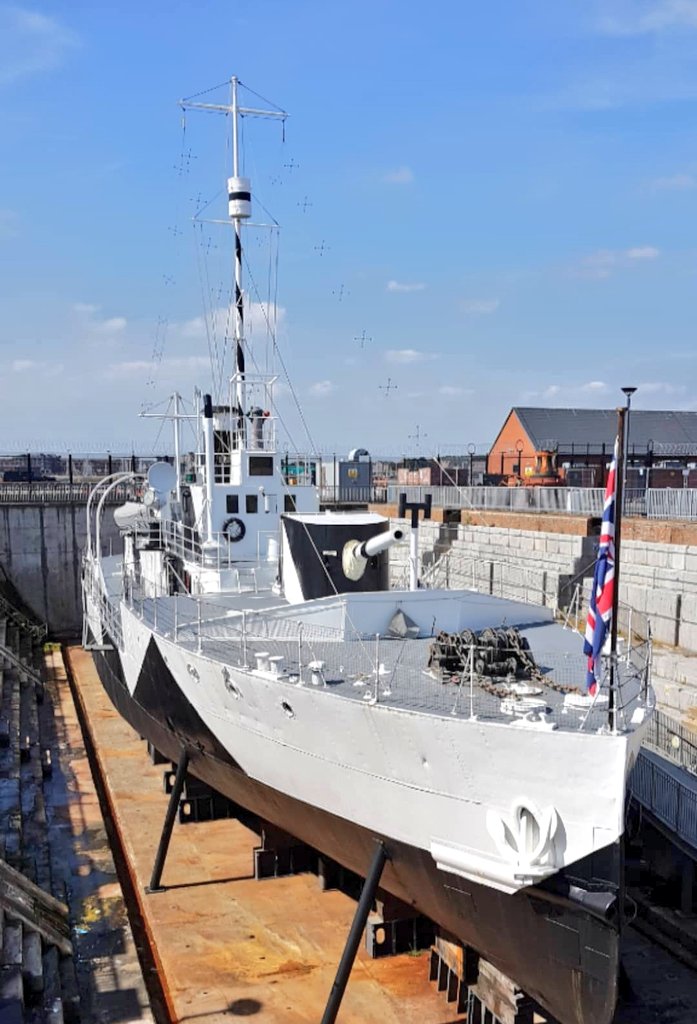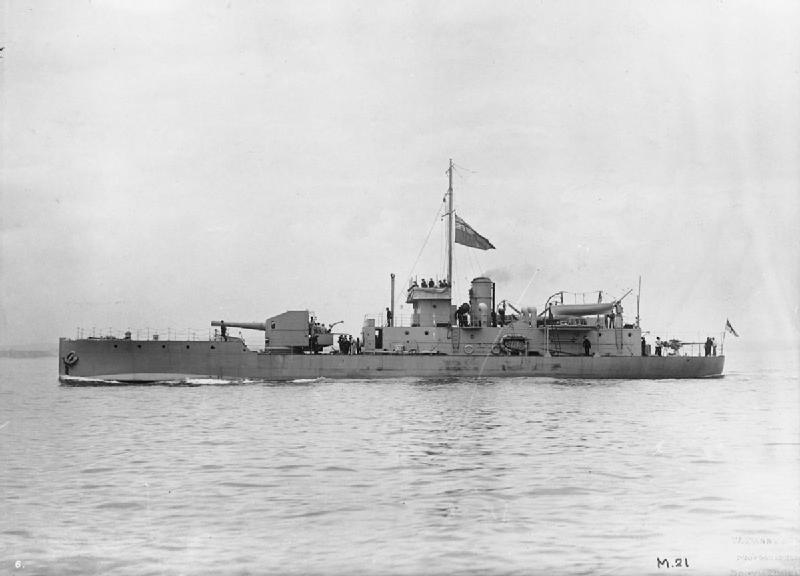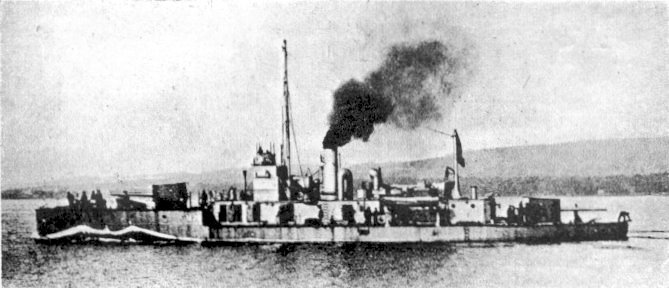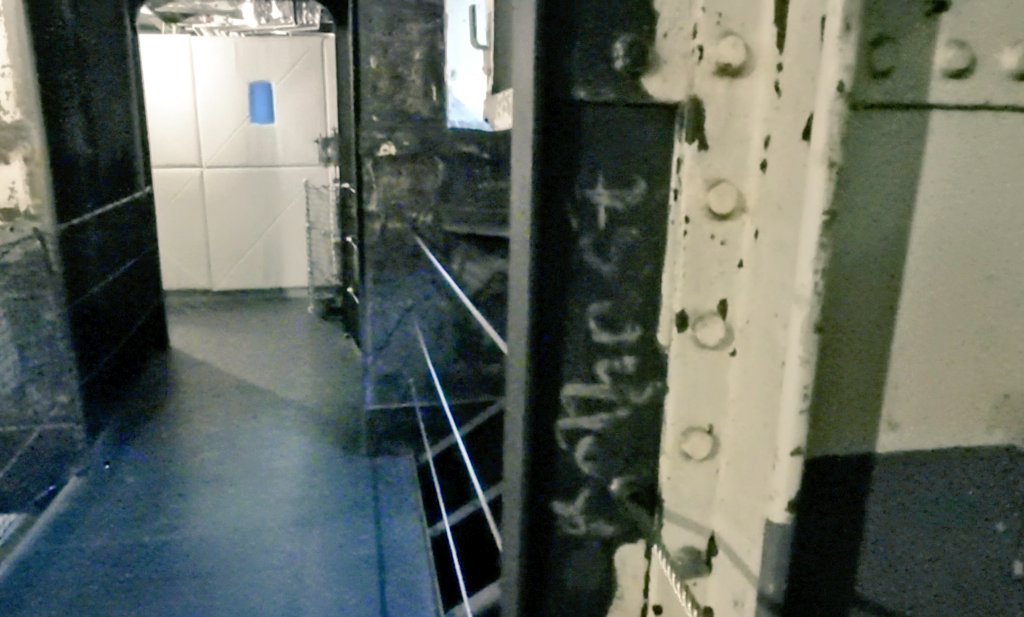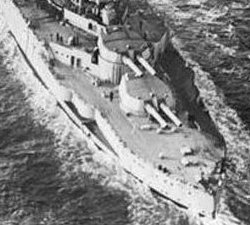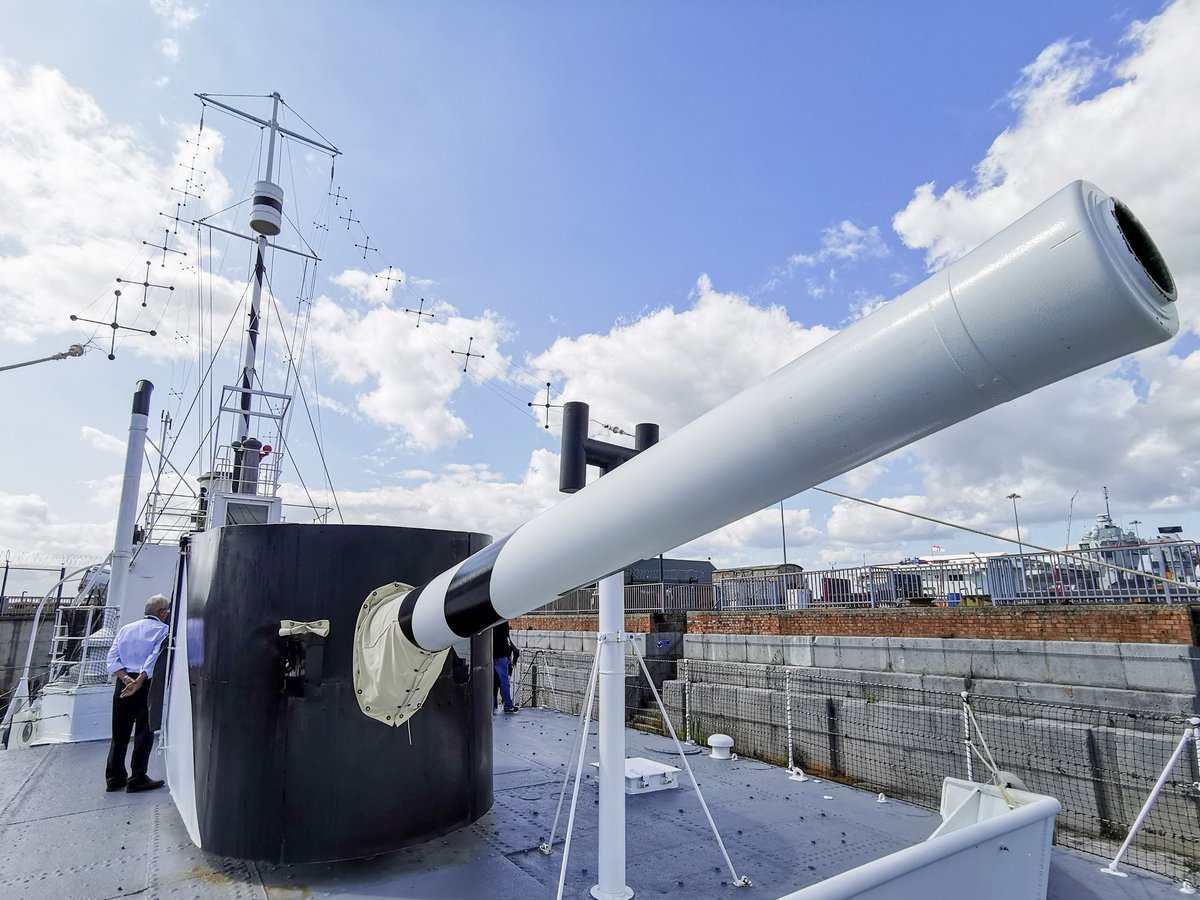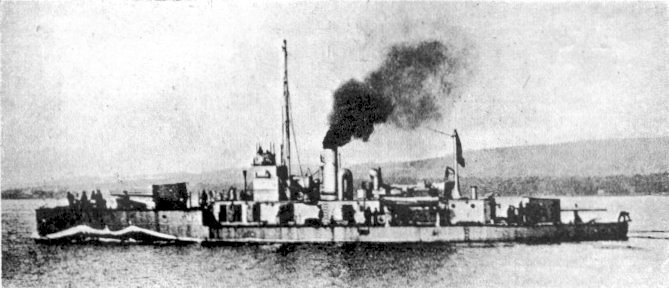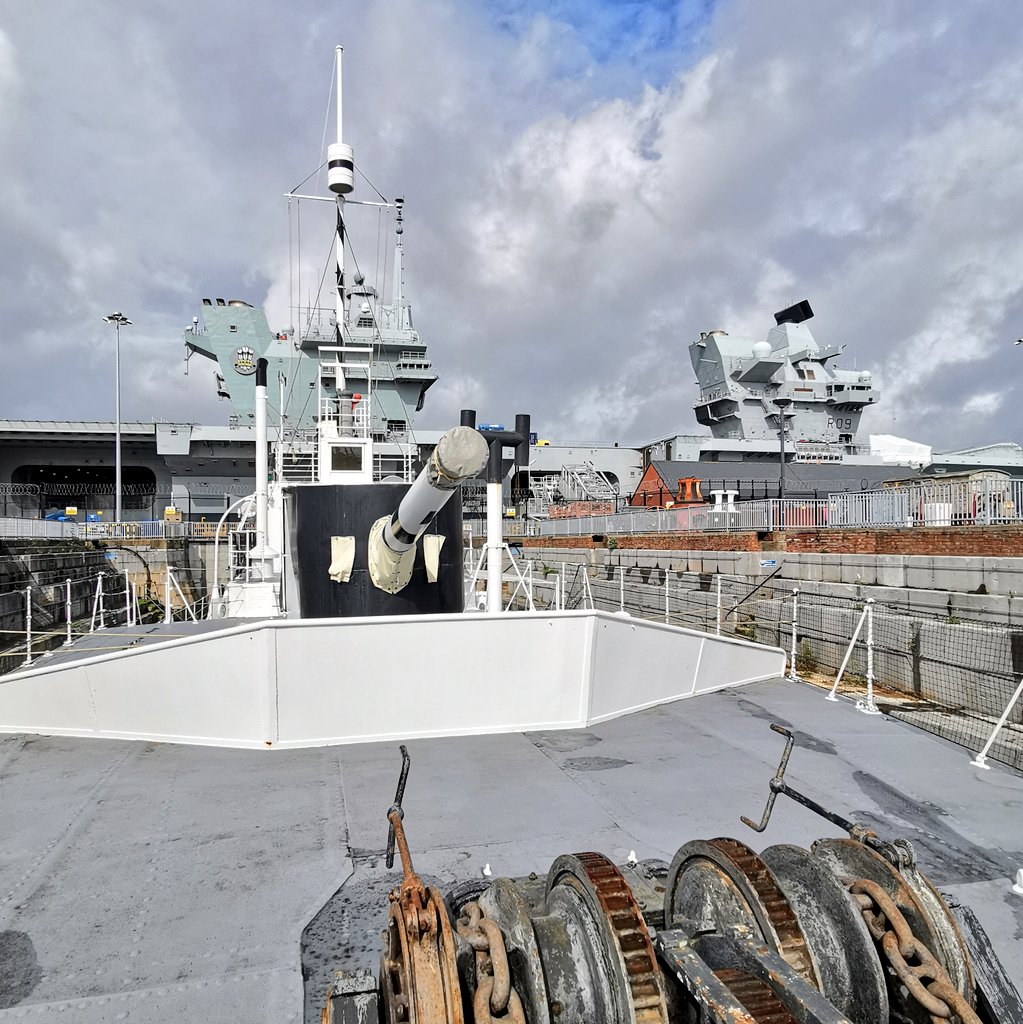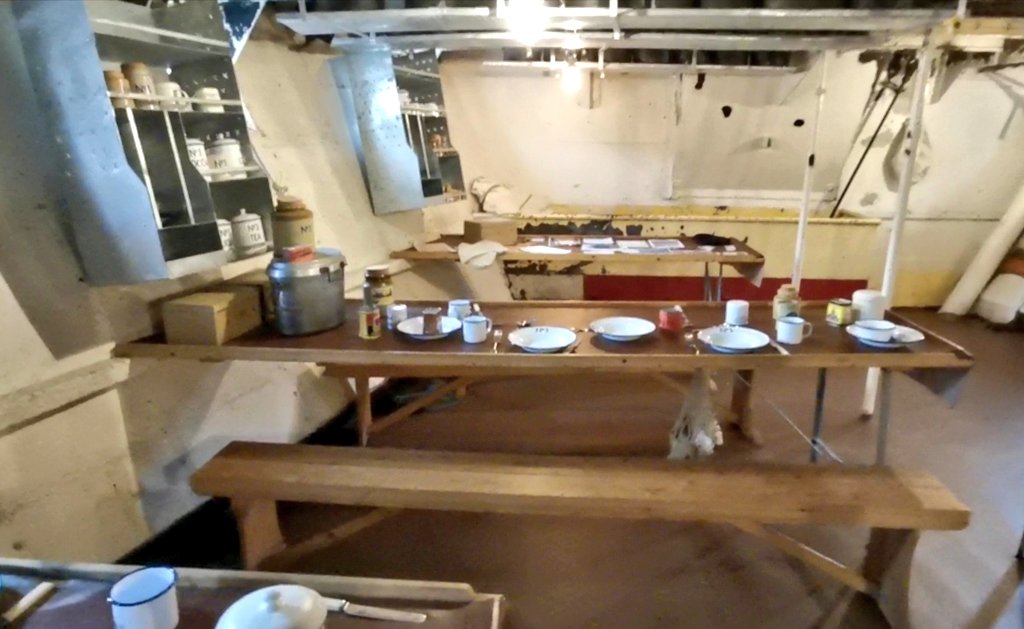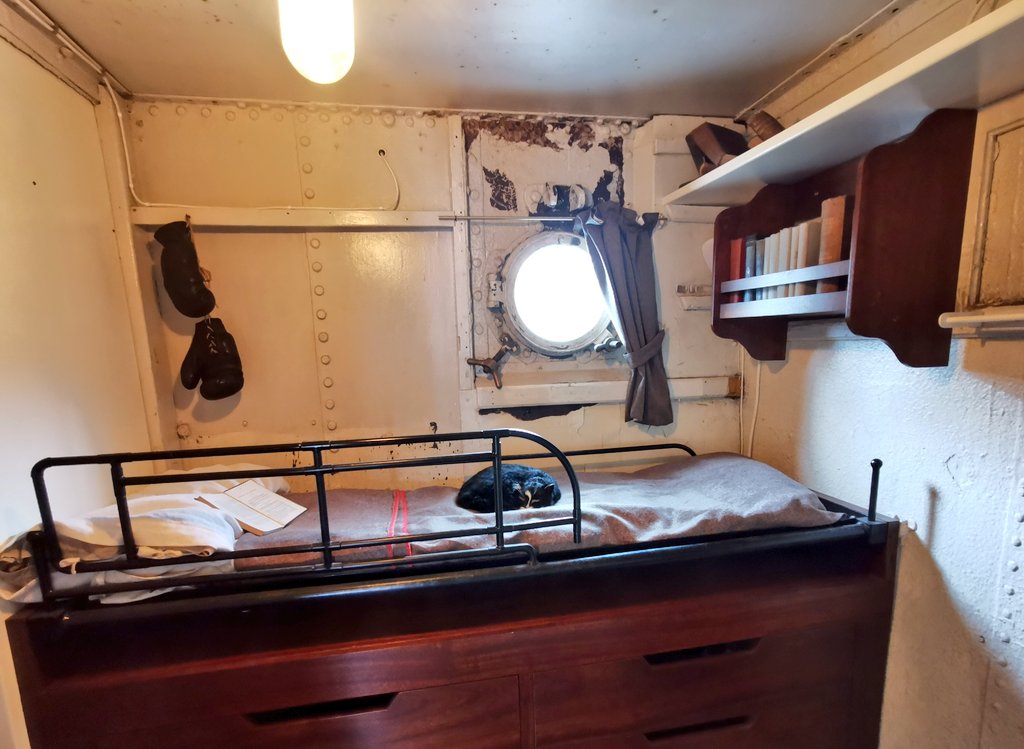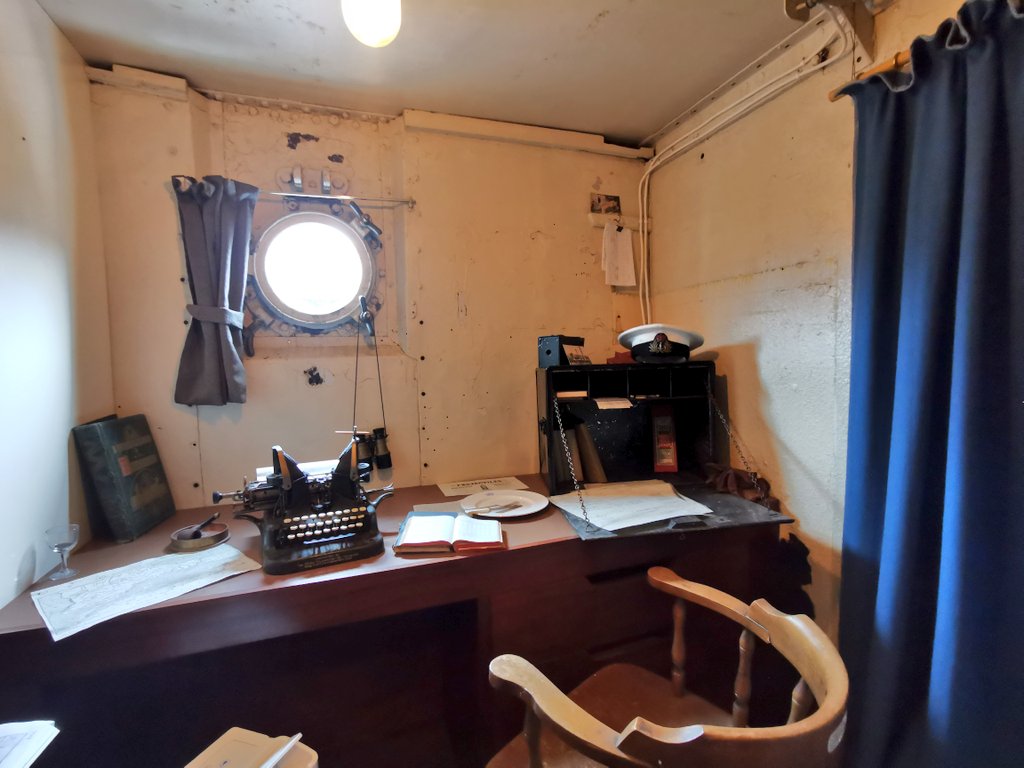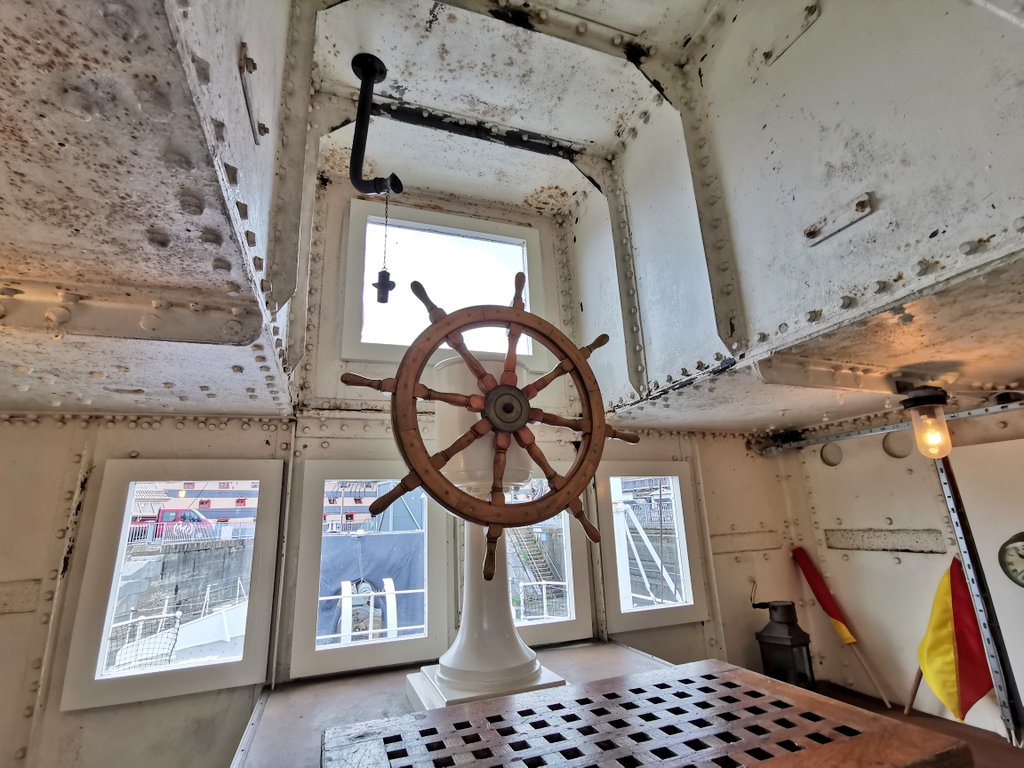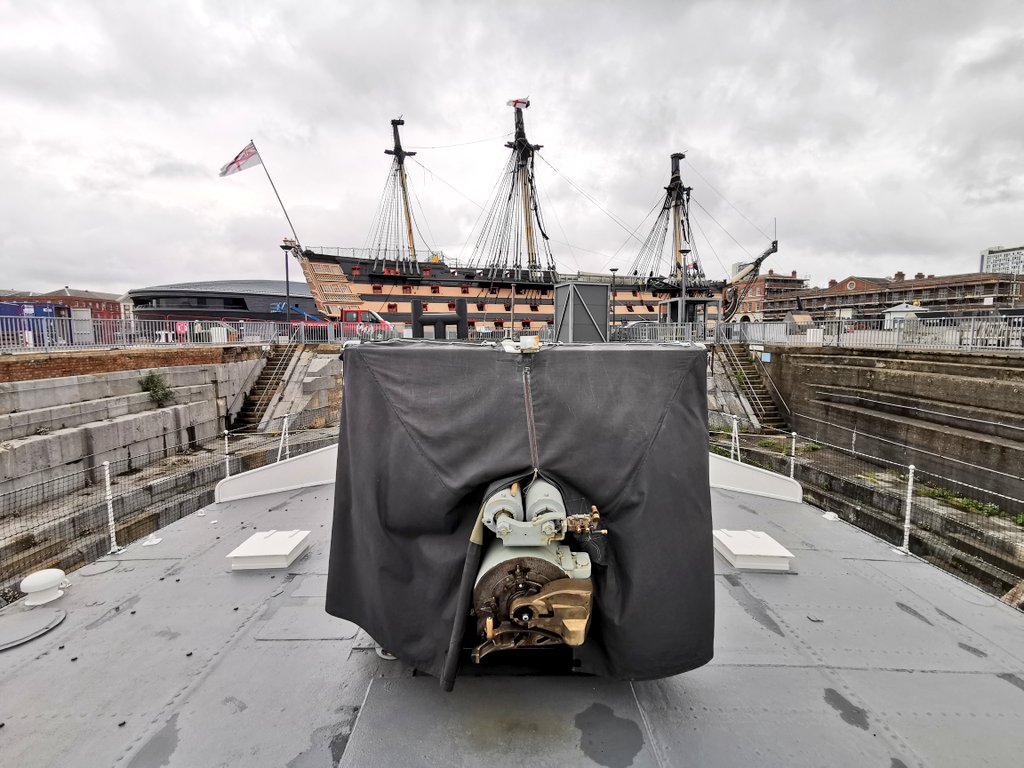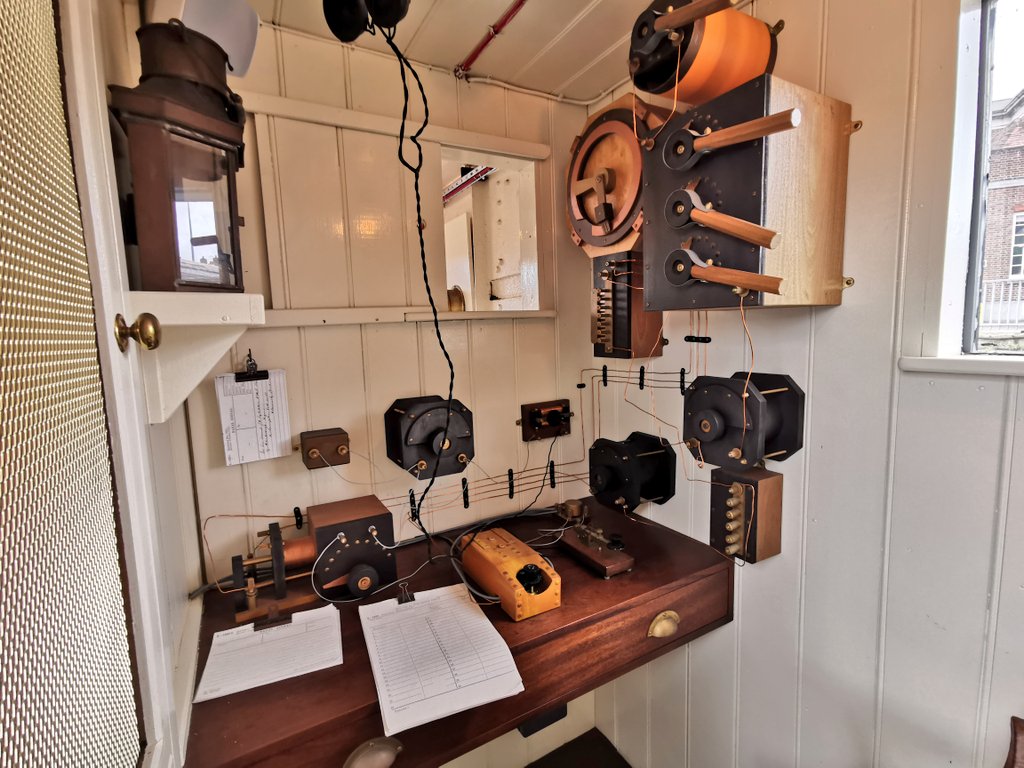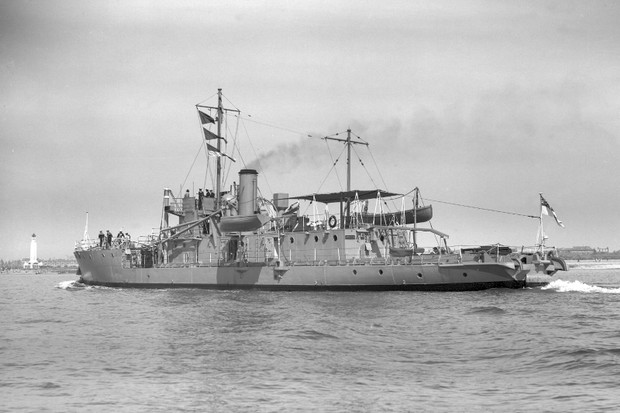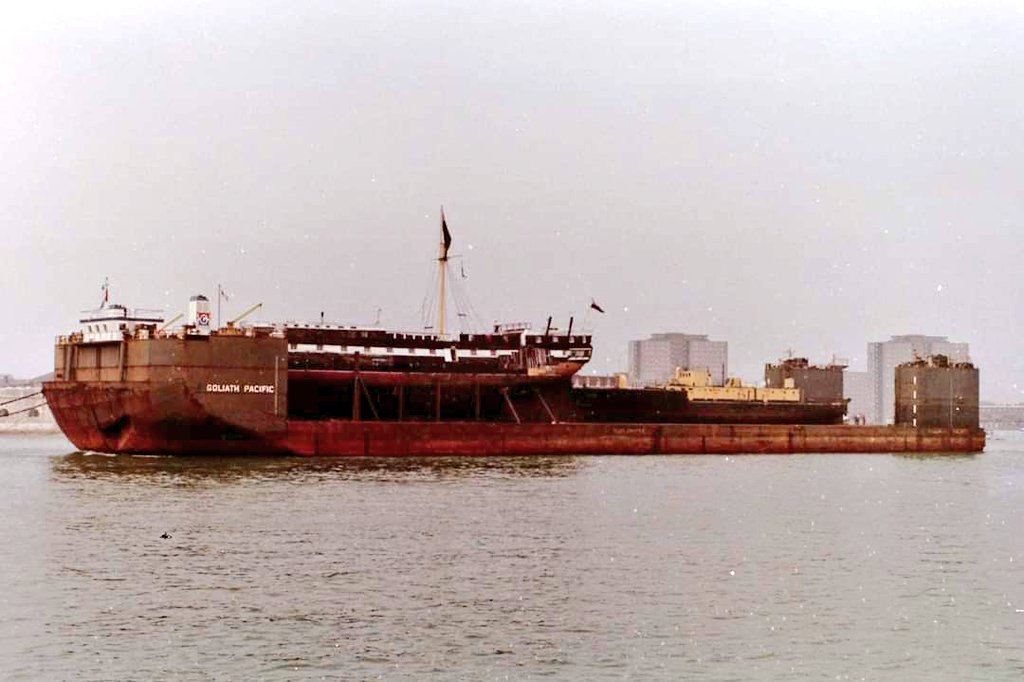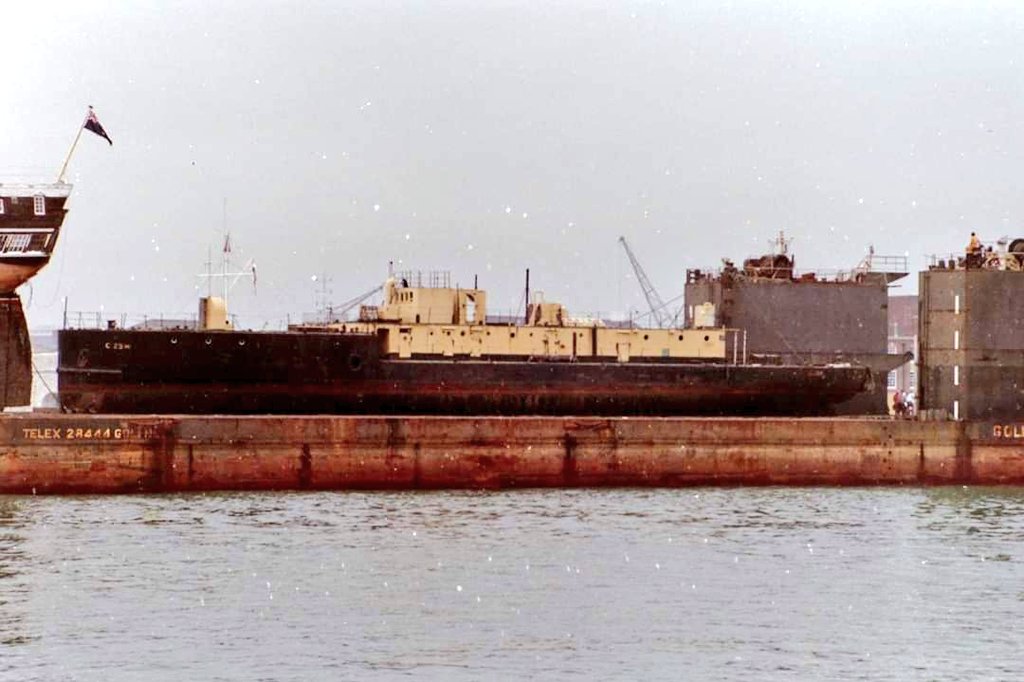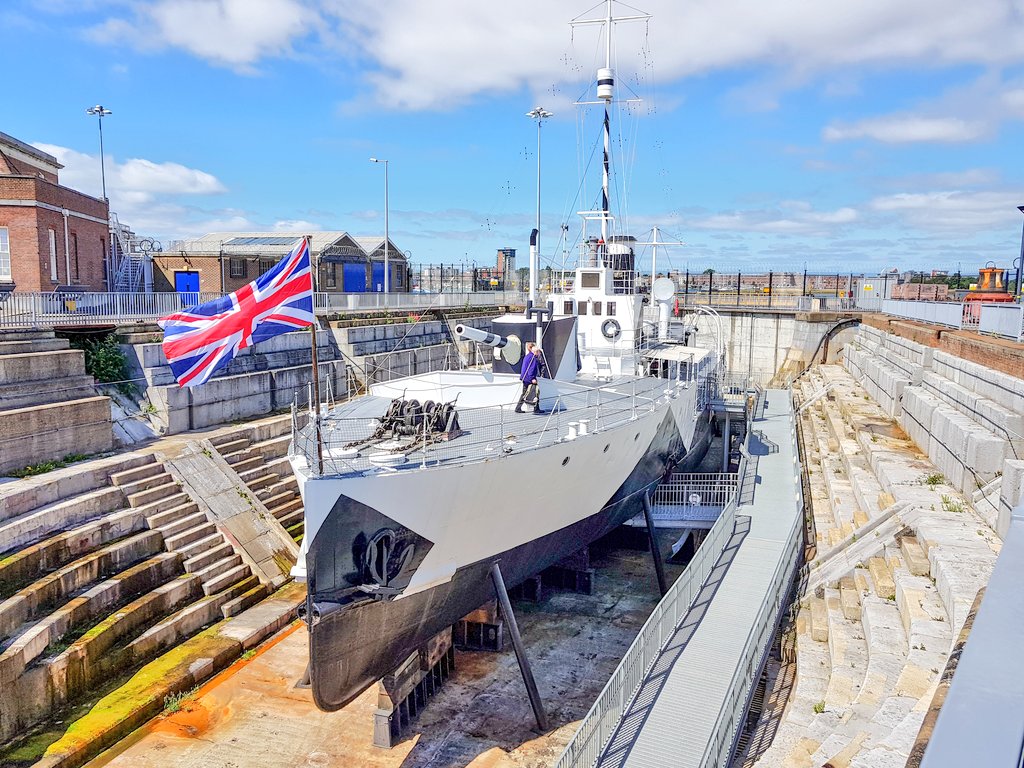#OTD 105 years ago HMS M.33 was launched at the Workman, Clarke Company, Belfast. She was built as part of the Emergency War Programme for naval ship construction during WW1.
Launched only 7 weeks after being laid down in March 1915.
Launched only 7 weeks after being laid down in March 1915.
HMS M.33 was the last of five M.29 class monitors that were ordered in early 1915.
The design was based on the M.15 class monitor, with changes to the ships bow, gun placement and length being most notable.
(note differences below)
The design was based on the M.15 class monitor, with changes to the ships bow, gun placement and length being most notable.
(note differences below)
The ships simple design allowed a good level of pre-fabrication, this helped her quick construction.
During restoration work in 2015 a marking saying & #39;Belfast& #39; from her construction was found scribbled on a bulkhead. Here it is today;
During restoration work in 2015 a marking saying & #39;Belfast& #39; from her construction was found scribbled on a bulkhead. Here it is today;
Her main armament was two MkXII 6 inch guns, they were very powerful guns for a ship of 177ft in length!
The guns were initially removed from disused aft casemates of Queen Elizabeth class battleships after they were found to be unusable.
The guns were initially removed from disused aft casemates of Queen Elizabeth class battleships after they were found to be unusable.
She was a slow ship, with a top speed of 10 knots. Propulsion was provided by new oil fed boilers, feeding two vertical steam triple expansion engines. Her crew liked the new & #39;cleaner& #39; oil fuel as opposed to coal!
M.33 like other smaller monitors had a shallow draught (M.33& #39;s being 7ft), allowed the ship to enter much shallower waters than other RN ships could.
The M.33 would then use her powerful armament to attack enemy positions at close range.
The M.33 would then use her powerful armament to attack enemy positions at close range.
HMS M.33 cost approximately over £30,000 to build, reusing armaments and old engines keeping the costs low. As well as simple design including no armour protection.
HMS Queen Elizabeth battleship in comparison cost over £3m.
HMS Queen Elizabeth battleship in comparison cost over £3m.
The crew complement of M.33 was 72, with 67 of the crew living in the cramped forward mess area in the bow of the ship.
The officers and CO of M.33 meanwhile had their own cabins midships and aft. The aft cabins were directly above the aft shell room and magazine!
The distinctive wheelhouse has a raised platform for the helmsman to see over the forward gun position.
Note the voice pipe allowing commands to be passed down from the navigation bridge above when used.
Note the voice pipe allowing commands to be passed down from the navigation bridge above when used.
M.33 also benefited from new radio telegraphy. During the Galipolli Campaign, this was vital communication, helping her to target Ottoman positions or to support ground forces.
The monitor HMS Humber often helped range targets for M.33 guns during her time in Suvla Bay.
The monitor HMS Humber often helped range targets for M.33 guns during her time in Suvla Bay.
HMS M.33 was completed late June 1915 and was sent to support the Galipolli Campaign. Here is a quick video of some of her key movements during June-August 1915;
(video work in progress of larger one!)
(video work in progress of larger one!)
After Galipolli she continued to serve in the Mediterranean until returning to Chatham in 1918.
In 1919 she supported British forces in the Russian Civil War, she was hit multiple times and nearly had to be scuttled due to shallow waters of the Dvina River while retreating.
In 1919 she supported British forces in the Russian Civil War, she was hit multiple times and nearly had to be scuttled due to shallow waters of the Dvina River while retreating.
In 1924 after years in reserve in Chatham she was converted into a minelayer and renamed HMS Minerva. Operating out of HMS Vernon until decommissioned in 1939.
Her engines were removed and over the next 40 years she became a floating boom vessel, office/storage hulk and workshop
Her engines were removed and over the next 40 years she became a floating boom vessel, office/storage hulk and workshop
I& #39;m 1984 she was sold from MoD service to be restored to her original M.33 build.
She then moved to Hartlepool, transported along with retired Foudryant, now HMS Trincomalee.
Several years later she was towed back to Portsmouth and was moored in Basin No.1 in @HMNBPortsmouth.
She then moved to Hartlepool, transported along with retired Foudryant, now HMS Trincomalee.
Several years later she was towed back to Portsmouth and was moored in Basin No.1 in @HMNBPortsmouth.
In the late 1990s she was moved into No.1 Dock and the dock sealed. Restoration by Hampshire County Council continued, in 2014 @NatMuseumRN won a HLF lottery grant to restore the ship.
She opened to the public on 7th August 2015.
She opened to the public on 7th August 2015.
Hope you& #39;ve enjoyed this thread on M.33!
If you& #39;d like to learn more about monitors of the Royal Navy here is my thread of threads on this subject! https://twitter.com/dhartley_NMRN/status/1254685439513985031?s=19">https://twitter.com/dhartley_...
If you& #39;d like to learn more about monitors of the Royal Navy here is my thread of threads on this subject! https://twitter.com/dhartley_NMRN/status/1254685439513985031?s=19">https://twitter.com/dhartley_...

 Read on Twitter
Read on Twitter